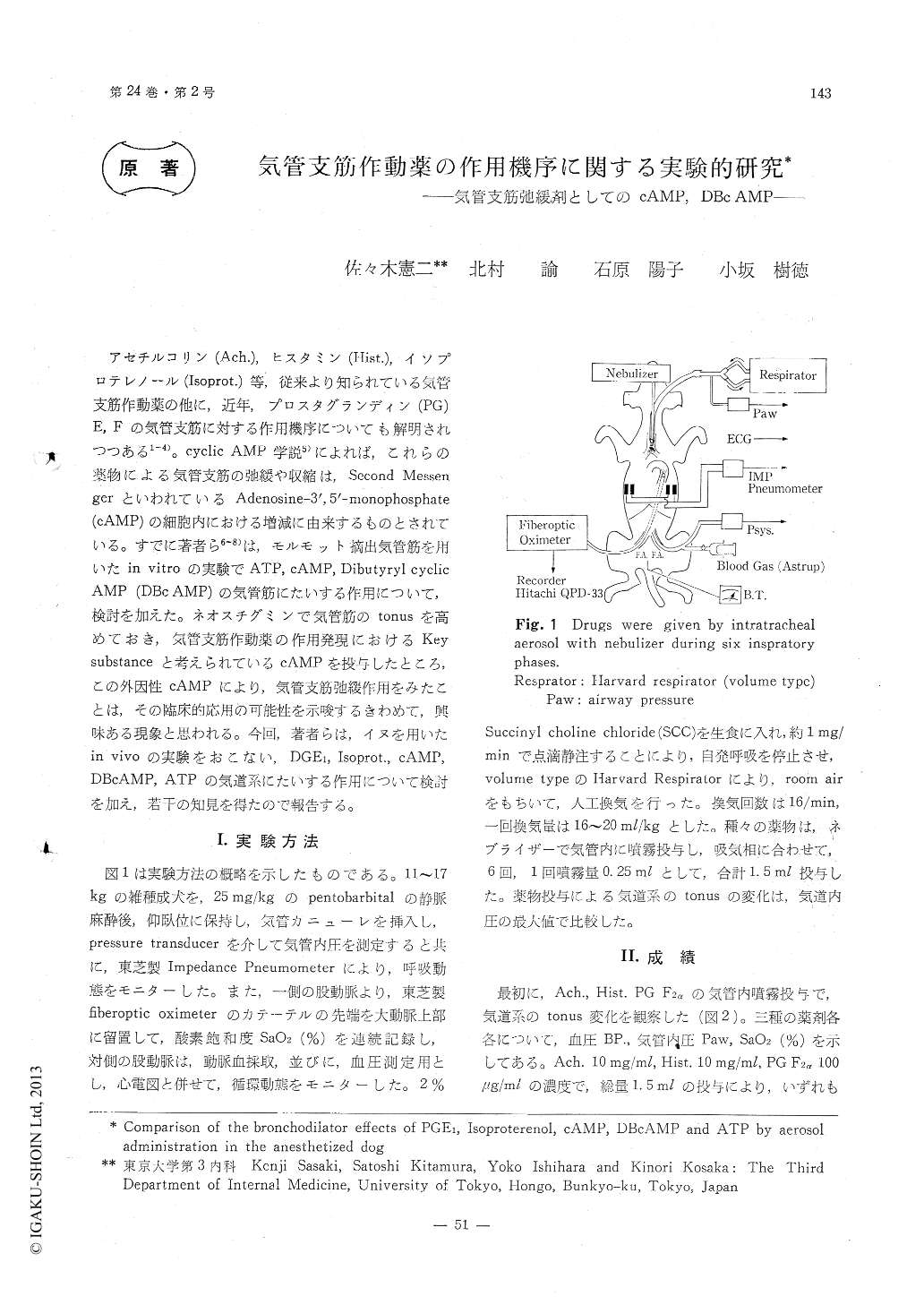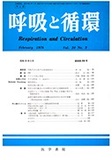Japanese
English
- 有料閲覧
- Abstract 文献概要
- 1ページ目 Look Inside
アセチルコリン(Ach.),ヒスタミン(Hist.),イソプロテレノール(lsoprot.)等,従来より知られている気管支筋作動薬の他に,近年,プロスタグランディン(PG) E,Fの気管支筋に対する作用機序についても解明されつつある1〜4)。cyclic AMP学説5)によれば,これらの薬物による気管支筋の弛緩や収縮は,Second Messen gerといわれているAdenosine−3',5'—monophosphate (cAMP)の細胞内における増減に由来するものとされている。すでに著者ら6〜8)は,モルモット摘出気管筋を用いたin vitroの実験でATP, cAMP, Dibutyryl cyclic AMP (DBc AMP)の気管筋にたいする作用について,検討を加えた。ネオスチグミンで気管筋のtonusを高めておき,気管支筋作動薬の作用発現におけるKey substanceと考えられているcAMPを投与したところ,この外因性cAMPにより,気管支筋弛緩作用をみたことは,その臨床的応用の可能性を示唆するきわめて,興味ある現象と思われる。
It is well known that prostaglandin F2α(PGF2α), acetylcholine and histamine induce contraction, while PGE1 and isoproterenol induce relaxation of tracheal smooth muscle.
Adenosine 3', 5'-cyclic monophosphate (cAMP) and guanosine 3', 5'-cyclic monophosphate (cGMP) have been implicated as the controlling agents in a number of processes which govern lung function.

Copyright © 1976, Igaku-Shoin Ltd. All rights reserved.


